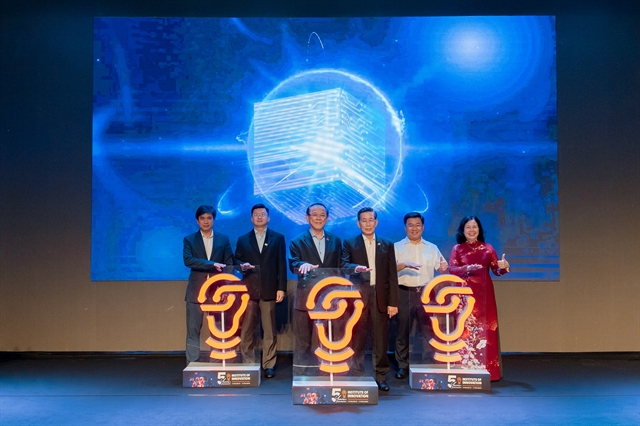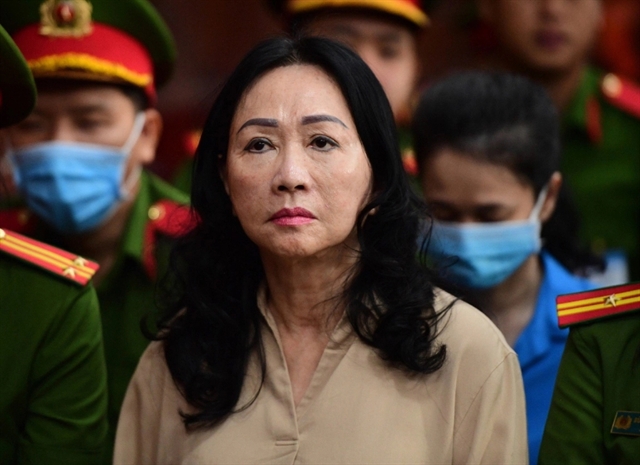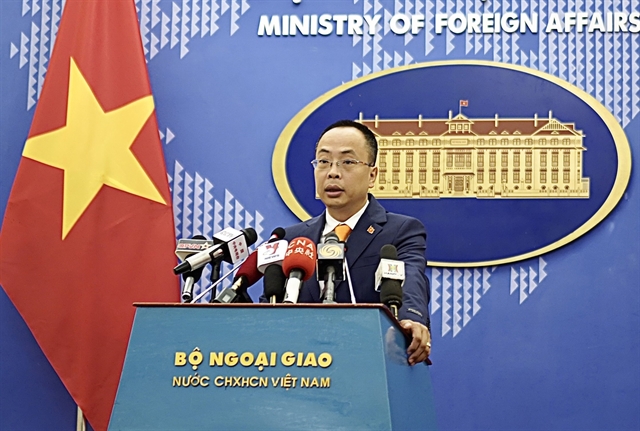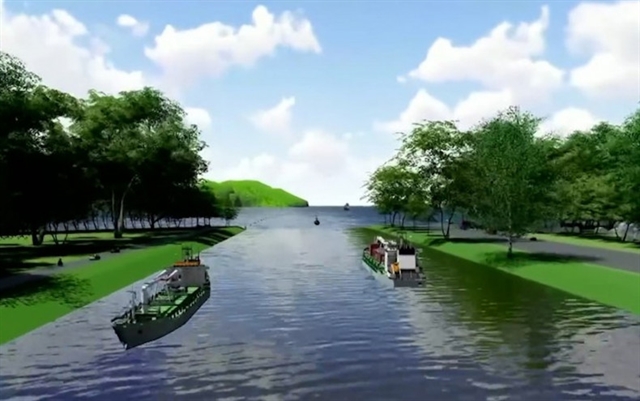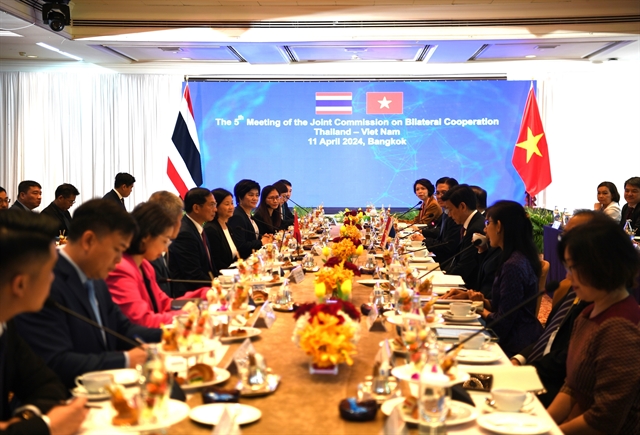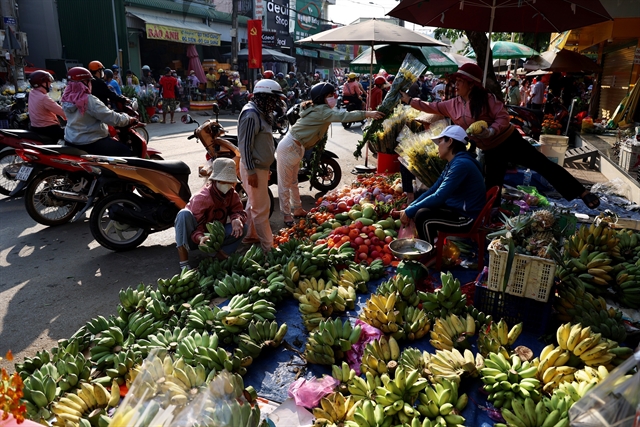 Features
Features
.jpg)
After initial trepidation, Thu Hằng sets aside the instant noodles she carried as insurance to enjoy chicken curry, living root bridges and other surprises in a remote Indian state that one has to visit at least once in a lifetime
 |
| Border town: Dawki in East Khasi Hills. |
After initial trepidation, Thu Hằng sets aside the instant noodles she carried as insurance to enjoy chicken curry, living root bridges and other surprises in a remote Indian state that one has to visit at least once in a lifetime
Meghalaya, meaning “Abode of the Clouds”, is very aptly named.
The Indian northeastern state is replete with lush green hills, cloud-capped landscapes and waterfalls of such great scenic beauty that Meghalaya could even be a synonym for paradise.
Courtesy a trip organised by the Indian Tourism Ministry, a group of us had the opportunity to visit a part of the subcontinent that is far, far away from the hotspots of the Taj Mahal and other world famous destinations.
Among many other things, northeast India offers an authentic experience of tribal cultures that can only be found in very few places on this earth.
As every traveller to India will tell you, the land has a special talent to surprise, especially if you are new to the place and have not looked beyond some obvious stereotypes, those generated in particular by the mainstream cultural ambassadors of Bollywood films and TV serials.
The day I arrived in Meghalaya, I mistook my tour guide for a Japanese man. Then I found out many local people look like Vietnamese as well. Surprise, surprise.
 |
| Dressed to kill: Young maidens and men, attired in their traditional regalia, perform at the annual Nongkrem dance. |
Our Japanese-looking tour guide suggested that the monsoon season, from May to October, was an ideal time to visit Meghalaya, because it would then show its true nature.
The climatic phenomenon that brings torrents of rain to the mountainous region is exemplified most by Mawsynram Village in Meghalaya’s East Khasi Hills district.
Situated at an altitude of 1,400 metres above sea level, the village records the highest rainfall on earth, earning its title as the world’s wettest place with an annual average of 11,872mm.
Cherrapunjee, around 15km away from Mawsynram Village, holds the second place with an average annual rainfall of 11,777 mm.
Cherrapunjee is home to mesmerizing waterfalls, the illuminated Mawsmai cave and living root bridges that are a stupendous feat of the human imagination. As I walked on one, somewhat gingerly, I could not but pay a heartfelt tribute to the ingenuity of the local people in fashioning an engineering miracle.
In Cherrapunjee, the heavy rainfall has sculpted many natural rock formations and waterfalls, including the Nohsngithiang cascade at Mawsmai, the hauntingly beautiful Nohkalikai Falls and the Dain Thlen Falls.
I watched in awe as the Nohkalikai Waterfalls plunged straight down from a height of 340m. In and around Shillong, the capital of Meghalaya, there are numerous waterfalls: Elephant Falls, Spread Eagle Falls, Sweet Falls, Crinoline Falls and Brendon Falls are among the better known.
During the monsoon season, Cherrapunjee acquires an otherworldly beauty as its landscapes get shrouded in mist, adding an air of alluring mystery.
This hilly region, with a challenging terrain that has been compared to Himalayan areas, except for the absence of snow, has become a highly preferred trekking destination; the treks to living root bridges are long, but well worth the effort.
Scattered across the dense valleys of Meghalaya’s Khasi Hills region, the living bridges are tangles of thick primary and secondary roots that have been ingeniously guided by human hands to intermingle and form a bridge. The roots are typically of the rubber tree (Ficus elastic).
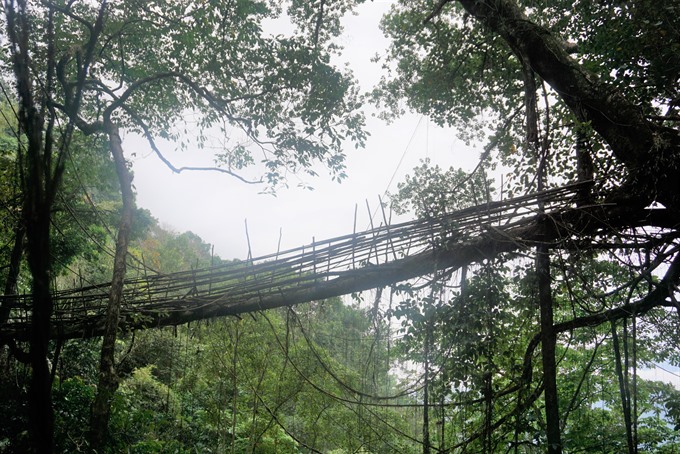 |
| Indigenous ingenuity: A living root bridge in Cherrapunjee. |
Trekking in such a beautiful environment is an experience like no other. The most spectacular and most popular trekking route is the one that leads to the Double Decker Living Root Bridge in Nongriat, a small village of the Khasi tribe. This is believed to be the only such bridge in the world.
This is not for the weak-kneed. It takes about five hours and thousands of steps to go down and then up to the village and the bridge.
I could not be part of this trek, but was told of it by Shailja Lakhotia, a 22 year old woman from Guwahati City who was on a three-day visit to Meghalaya with her two girlfriends.
“I have read somewhere on the Internet that the double decker bridge with 3,500 steps is one of the top ten places you should visit before you die,” she said.
“Travelling here is a little difficult. If you aren’t ready for the trek, it can be very tiring. Going down is easier than climbing up, which is really difficult,” she said, adding, “but I have never seen something so beautiful. When you actually get there, it is a different feeling.”
I have marked this place down for a repeat visit to the region.
Caving delights
Meghalaya is also a dream destination for cavers from all over the world, home to more than 1,000 caves, many of which have not been explored and mapped. It also has some of the longest and deepest cave systems in the world, most of them limestone and sandstone formations.
Krem Liat Prah, the longest natural cave in India, is almost 25km long and getting longer as more caves and tunnels are linked to it. Another unforgettable destination, with the famous “Aircraft Hangar” passage, this cave is located in Jaintia Hills.
Krem Dam, Krem Lymput, Krem Umkseh, Krem Mawjymbuin, Krem Lubon, and Mawsmai are among other caves that visitors to Meghalaya can explore.
Dawki Town
The site of a cross-border trading hub, Dawki Town on the India-Bangladesh border in East Khasi Hills has the beautiful Umngot River flowing through it. The drive to get there, with the road winding its way through deep gorges and ravines, is by itself an exciting experience.
One of the major attractions in the town is a single-span suspension bridge over the Umngot River, built in 1932 by the British.
Dawki is a good spot for adventure sports like scuba diving, river rafting, cliff jumping, zip lining, caving, rock climbing, kayaking and camping.
Matrilineal tradition
Meghalaya is home to three major tribes: the Khasis, the Jaintias and the Garos. Like most of the Northeastern Indian states, it boasts a multicultural, multiethnic and multi-religious people who maintain most of their traditions even after adopting a more modern lifestyle.
We learnt that these tribes celebrate several festivals that are amazing expressions of joy and happiness, featuring different dances, feasts and worship rituals.
Our tour guide told us that this was one of the few places in the world with a matrilineal system wherein women own land and property, not the men. Children go by the mother’s family name. Daughters inherit the family’s property.
Among the Khasis, for instance, the husband moves to the wife’s village after marriage and children take on the mother’s surname.
And the matrilineal set up does not change when outsiders enter the picture. Amalraj Susairaj, a spices trader from Chennai City in the south, got married to a Khasi woman and moved to live with his wife in Shillong.
Surprise, surprise, again. I am still getting my head around this, coming from a patriarchal culture where Confucian norms are not only normal, but also dominant, to this day.
 |
| Water sports: Visitors have fun on Umngot river. |
 |
| Verdant vistas: Valleys of Meghalaya’s Khasi Hills region. |
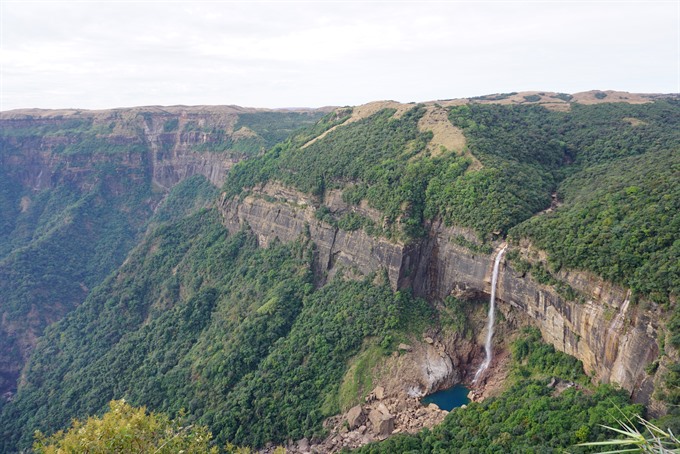 |
| Cascading splendour: The spectacular Nohkalikai Falls. |
In step
The drive through undulating hills to reach Smit Village, 15km from Shillong, and watch the famous Nongkrem Dance is an unforgettable experience, especially for first-time visitors.
The annual dance is held at the traditional palace of the Syiem of Hima Khyriem (chief of Khyriem), and is part of a five-day festival that beseeches Goddess Ka Blei Synshar to bless the people with a prosperous harvest.
The costumes and jewelry sported by the young Khasi maidens reminded me of Vietnamese ethnic minorities in the highlands. To haunting tunes played on the tangmuri pipes they stepped in rhythm with the beats played on the drums.
Young men, also attired in their traditional regalia, dance in front of the ling sad (thatched palace), holding swords and white yak hair whisks.
Like the buffalo sacrifices in Việt Nam, goats are sacrificed during the Pomblang ceremony that follows the dance.
Don Bosco Centre
Visitors to Meghalaya invariably make their way to the Don Bosco Museum of Indigenous Cultures, which is the largest of its kind in Asia. The museum is a window into the rich diversity that Northeast India presents.
The museum, which has its own research and publication wings, works to preserve and promote the rich cultural heritage of India’s Northeastern states. It is a rich repository of artifacts that are presented to the public via 17 galleries. These include paintings, weapons, traditional musical instruments and costumes unique to the different ethnic communities, of which there are nearly 300.
Such cultural diversity is also reflected in the region’s cuisine, enticing visitors and locals with a smorgasbord of dishes, many of which can be tried at the Don Bosco Museum’s food gallery.
On the advice of friends, I had brought a lot of instant noodles from Việt Nam with me, just in case I could not handle the famous spiciness of Indian cuisine. But the sheer variety available tempts one to try as many dishes as possible, from pork chops to those with exotic names like the Raja Mirchi (King of Chillies), wild rice, fish, momos, noodles, Jadoh , and Tungrymbai.
Personally, I developed a taste and hankering for chicken curry and my instant noodles were left untouched.
To sign off a really hot note, Meghalaya is home to the world’s hottest chilli, Bhut Jolokia, or ghost pepper.
“Be careful with this kind of chilli. You should eat just a tiny piece or there will be an explosion of firecrackers in your mouth,” my tour guide said. I decided to be prudent and give it a wide pass.
Apart from all the amazing sights and sounds, one picture I carry with me is of young people having fun while travelling in public buses, singing and dancing. The gaiety captures the spirit of the people and the place. VNS
Getting there By Air: Flights are available from Kolkata to Guwahati LGB Airport and Umroi Airport. By Rail: Trains from all parts of India go to Guwahati City. By Road: The state has a good road network. National Highway 40 connects the state with Guwahati City and other cities of the country. Best time to visit: From October to April, usually, but the monsoon season from May to October offers the opportunity to get drenched in the wettest place on earth. |
.jpg)

